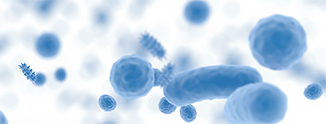Environment, Occupation and Health
Exposures indoors, outdoors and at work contribute substantially to the global burden of morbidity and mortality caused by infectious and non-communicable diseases. In the Research Unit for Environment, Occupation and Health, we work with the impact of environmental factors, including occupational exposures, on health.
We develop methods to assess environmental and occupational exposures - from biomarkers to job exposure matrices and spatial models. We also develop methods for targeted prevention of diseases related to environmental and occupational exposures.
Examples of current research areas are occupational and environmental epidemiological studies within the broad areas of airway diseases and other inflammatory disease, allergy, cancer and birth outcomes. Assessment of acute humane health effects of controlled exposures in human exposure chambers is another example.
We are a highly collaborative and international research unit with a focus on the interplay between environment and health. The unit counts full professors, associate/assistant professors, highly specialized technicians, several post docs, PhD students, and pre-graduate students involved in numerous national and international research groups as well as research centers.
Methods
In the research unit, we make use of a broad variety of methods:
- We conduct epidemiological studies on environment, occupation and health among human cohorts based on original research data and administrative registers.
- We use big data to develop individual exposure measures using e.g. GIS, person-borne sensors, job exposure matrices and different modelling approaches.
- We measure exposures in the environment (e.g. microbial exposures, particles).
- We analyse environmental and human samples in our lab (e.g. endotoxin, allergens) and with collaborating labs, including microbiome analysis, next generation sequencing, genomics and proteomics.
- We perform clinical investigations (e.g. lung function, allergy test, exhaled breath, nasal lavage).
- We conduct human RCT experiments with airborne contaminants under strict climate control in our human exposure chamber.




